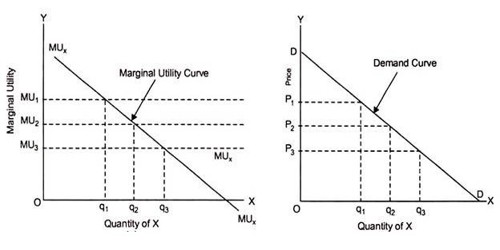The cardinal utility approach or what is called also as the Marshallian approach to consumer’s equilibrium is based on the following assumption –
- Rationality
It is assumed that the consumer is a rational being in the sense that he satisfies he wants in order to their merit. It means that he buys a commodity which yields the highest utility and he buys last a commodity which he gives the last. The consumer is assumed to the rational. He tries to exploit his total efficacy under the income constraint.
- Limited money income
The consumer has a limited money income to spend on the goods to services he chooses to consume. The customer has limited money to expend on the purchase of goods and services and thus this makes the customer buy those commodities primary which is a requirement. It is implicit that the marginal utility of money remains steady irrespective of the level of a consumer’s earnings.
- Maximization of satisfaction
Every rational consumer intends to maximize his satisfaction from his given money income. Every customer aims at maximizing his/her pleasure for the amount of money he/she spends on the goods and services.
- The utility is cardinally measurable
The cardinal assumes that utility is cardinal i.e, it can be measured in absolute term a cardinal number. It is implicit that efficacy can be measured by transmission definite numbers. Such as 1, 2, 3, etc. that means efficacy is an experimental entity. According to this concept, a person can articulate the satisfaction, which is derived from the expenditure of a product in quantitative terms.
- Diminishing marginal utility
The cardinal assumed that the utility gained from successive units of a commodity consumed decreases as a consume more and more units of it. If the stock of commodities increases with the customer, each supplementary stock or unit of the commodity gives him less and less pleasure. It means utility increases at a lessening rate.
- The constant utility of money
The marginal utility of money remains constant whatever the level of consumer’s income and each unit of money has utility equal to 1. The utility consequents from commodities are deliberate in terms of money. So, money is a unit of measurement in the cardinal approach. Hence, the marginal utility of money should be constant.
- Utilities are Independent
Marginal utility analysis assumes that the utilities of dissimilar commodities are independent of one another. That is the utility of one product does not influence that of another. According, to this statement, the utilities of a variety of goods are preservative, i.e. the divide utilities of a variety of goods can be added to attain the total sum of the utilities of all goods consumed.
- Diminishing Marginal Utility
This means, with the augmented expenditure of a product or service, the utility consequent from each consecutive unit goes on retreat. This law holds true for the theory of customer activities.
Cardinal utility analysis is the oldest hypothesis of demand which provides a justification of consumer’s demand for a product and derives the law of demand which establishes an inverse relationship between price and amount demanded of a product.













